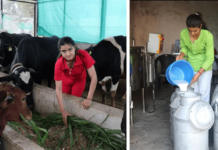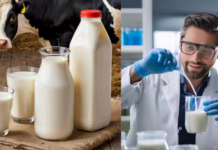New Delhi, October 28, 2020: An Irish dairy farm has recorded one of its best years for milk volume and quality since it had a breakthrough in managing udder health.
It is nearly a year since Padraig Mulligan first trialled Maycillin on his high cell count cows at drying off time, and the result is low cell counts, higher milk sales and very little use of antibiotics.
He plans to use no antibiotics for mastitis control going forward, only Maycillin.
“We’ve had one of our best years for milk volume and quality in a long time,” says Padraig, who farms with his parents, Pat and Nula, at Ballygar, Co. Galway.
Before Maycillin was introduced, up to 14% of the milking herd was being culled annually due to cell counts ranging from 400,000–600,000 cells/ml.
As Padraig looks ahead to drying off this year, he says Maycillin has helped him to restore udder health in his British Friesian herd.
“Maycillin costs me around €30 a cow but when we are getting these results it is worth every penny. I’m also using far fewer antibiotic tubes,’’ says Padraig, who also works off-farm as a driver for Aurivo according to the reports published in agriland.ie.
He will be sampling every cow in the coming weeks in preparation for drying off in December and any with high cell counts will be bolused.
Fixed The Problem
The Maycillin udder health system manufactured by Mayo Healthcare releases allicin, an active substance in garlic. Allicin is used in bolus form in several countries as an alternative to antibiotics in both clinical and sub clinical challenges.
The Mulligans calve their herd in a nine-week block from mid-February. The herd produces an average annual milk yield of 5,700L/cow at 4.25% butterfat and 3.65% protein with milk sold to Aurivo.
Until this year, mastitis had been the greatest challenge and this was resulting in lost milk sales and a high level of cows being culled from the herd. Antibiotic tubes had been used but these were a short-term solution as further flare-ups followed.
Maycillin has now fixed the problem, says Padraig, with the herd’s average cell count now running at between 80,000–85,000 cells/ml.


































